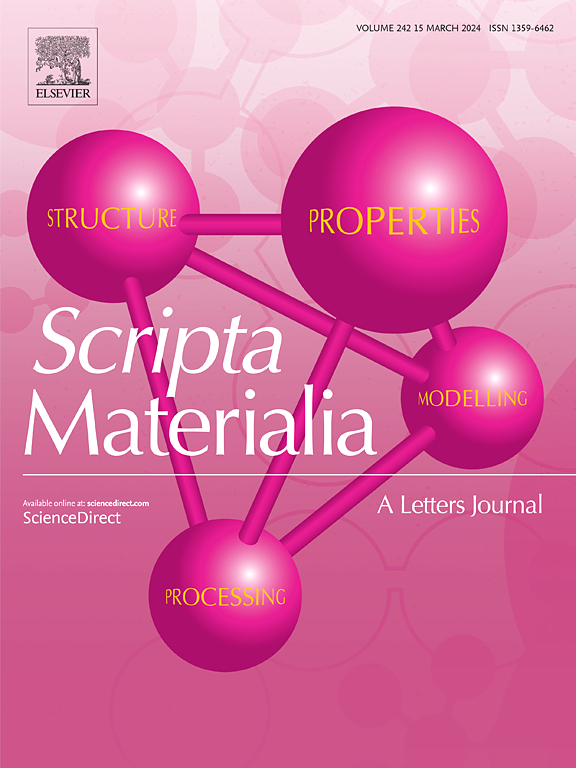Mo/W偏析形成的梯度TiZrHfMoW/(Mo,W)N多层涂层:界面结构和增韧机制
IF 5.6
2区 材料科学
Q2 MATERIALS SCIENCE, MULTIDISCIPLINARY
引用次数: 0
摘要
受天然材料分层结构的启发,采用简单的一步溅射沉积技术制备了TiZrHfMoW/(Mo,W)N梯度多层涂层,利用分离诱导的自组装而不是传统的顺序沉积。在沉积过程中,W和Mo的自发偏析导致TiZrHfMoW基体内部形成层状(Mo,W)N相。这些亚层与周围的高熵合金相呈外延关系,形成明确的相干界面。与单片(Mo,W)N涂层相比,梯度多层体系保持了相当的表面硬度(~ 18.8 GPa),同时显著提高了机械载荷下的损伤容忍度。协同增韧机制包括固溶体强化、界面相干应变、晶界硬化以及有助于裂纹止裂和应力分布的空间变化模量。这项工作展示了一种可扩展的、自组织的建筑涂料设计策略,在苛刻的使用条件下提供卓越的机械性能。本文章由计算机程序翻译,如有差异,请以英文原文为准。

Gradient TiZrHfMoW/(Mo,W)N multilayer coatings formed via Mo/W segregation: Coherent interface architecture and toughening mechanisms
Inspired by the hierarchical architectures found in natural materials, a TiZrHfMoW/(Mo,W)N gradient multilayer coating was fabricated using a simple one-step sputtering deposition technique, leveraging segregation-induced self-assembly rather than conventional sequential deposition. During the deposition process, the spontaneous segregation of W and Mo led to the formation of a layered (Mo,W)N phase within the TiZrHfMoW matrix. These sublayers exhibit epitaxial relationships with the surrounding high-entropy alloy phase, forming well-defined coherent interfaces. Compared to a monolithic (Mo,W)N coating, the gradient multilayer system maintains comparable surface hardness (∼18.8 GPa) while significantly enhancing damage tolerance under mechanical loading. The synergistic toughening mechanisms include solid solution strengthening, interface coherency strain, grain boundary hardening, and a spatially varying modulus that aids crack arrest and stress distribution. This work demonstrates a scalable, self-organizing design strategy for architectured coatings with offering superior mechanical performance under demanding service conditions.
求助全文
通过发布文献求助,成功后即可免费获取论文全文。
去求助
来源期刊

Scripta Materialia
工程技术-材料科学:综合
CiteScore
11.40
自引率
5.00%
发文量
581
审稿时长
34 days
期刊介绍:
Scripta Materialia is a LETTERS journal of Acta Materialia, providing a forum for the rapid publication of short communications on the relationship between the structure and the properties of inorganic materials. The emphasis is on originality rather than incremental research. Short reports on the development of materials with novel or substantially improved properties are also welcomed. Emphasis is on either the functional or mechanical behavior of metals, ceramics and semiconductors at all length scales.
 求助内容:
求助内容: 应助结果提醒方式:
应助结果提醒方式:


